Center City MLK Day march pushes for more activism on holiday
-
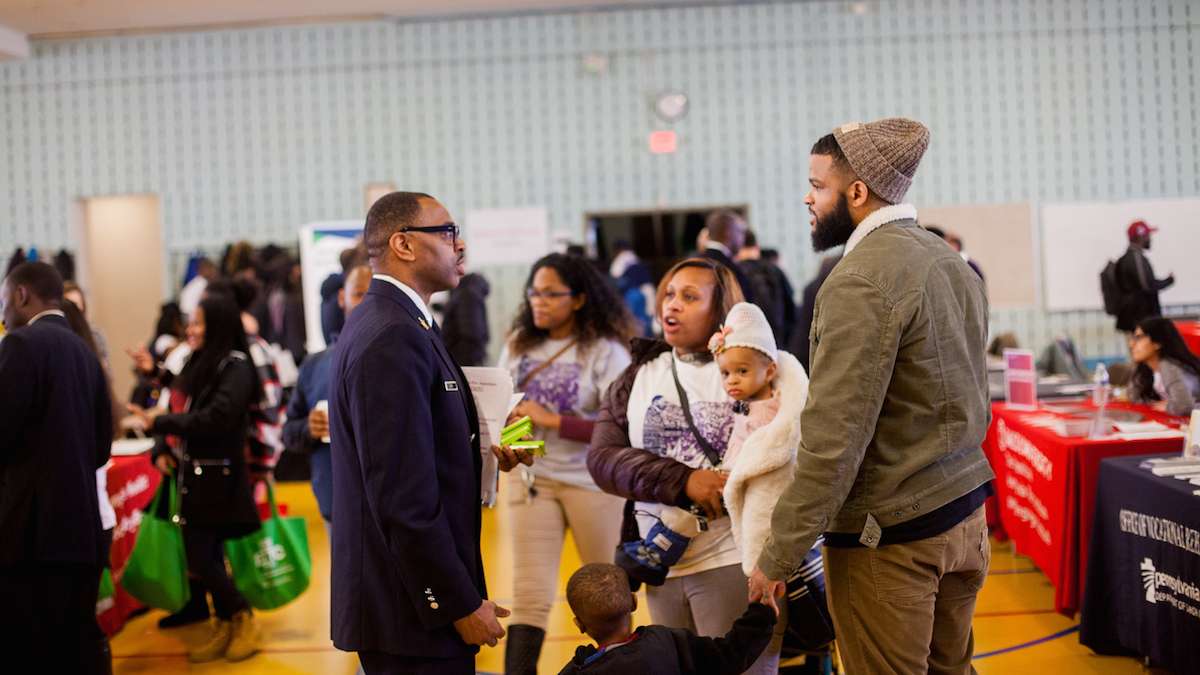
Captain Sean Mack of the Philadelphia Fire Department walked the floor talking to potential new recruits at a job and services fair at Girard College. (Brad Larrison for NewsWorks)
-
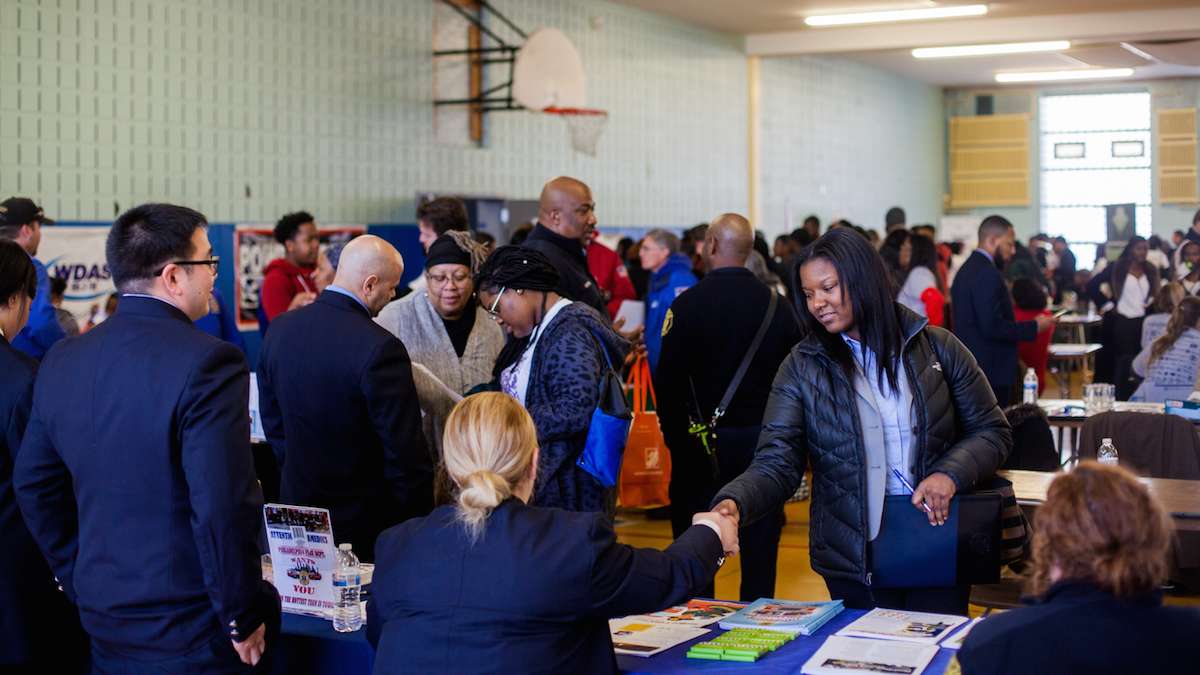
The Philadelphia Fire Department tabled and looked for new recruits at a job and services fair at Girard College on Martin Luther Kind Day. (Brad Larrison for NewsWorks)
-
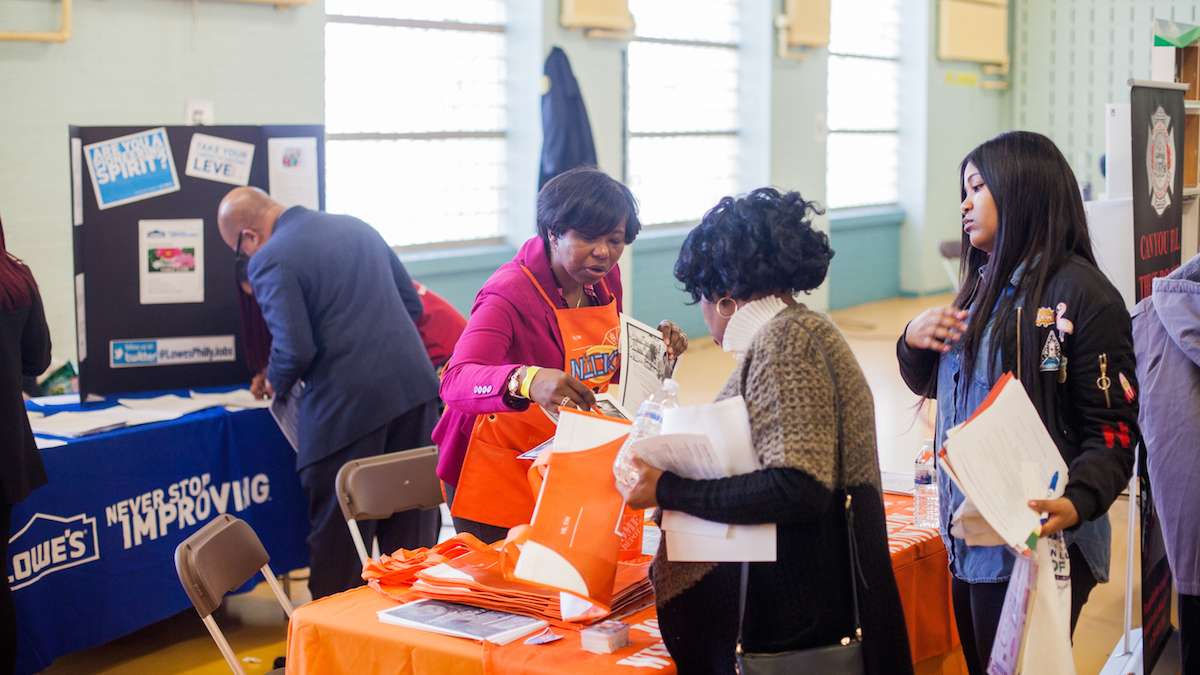
Nickie Richardson looked to recruit new employees for Home Depot at a job and services fair at Girard College on Martin Luther King Day. (Brad Larrison for NewsWorks)
-
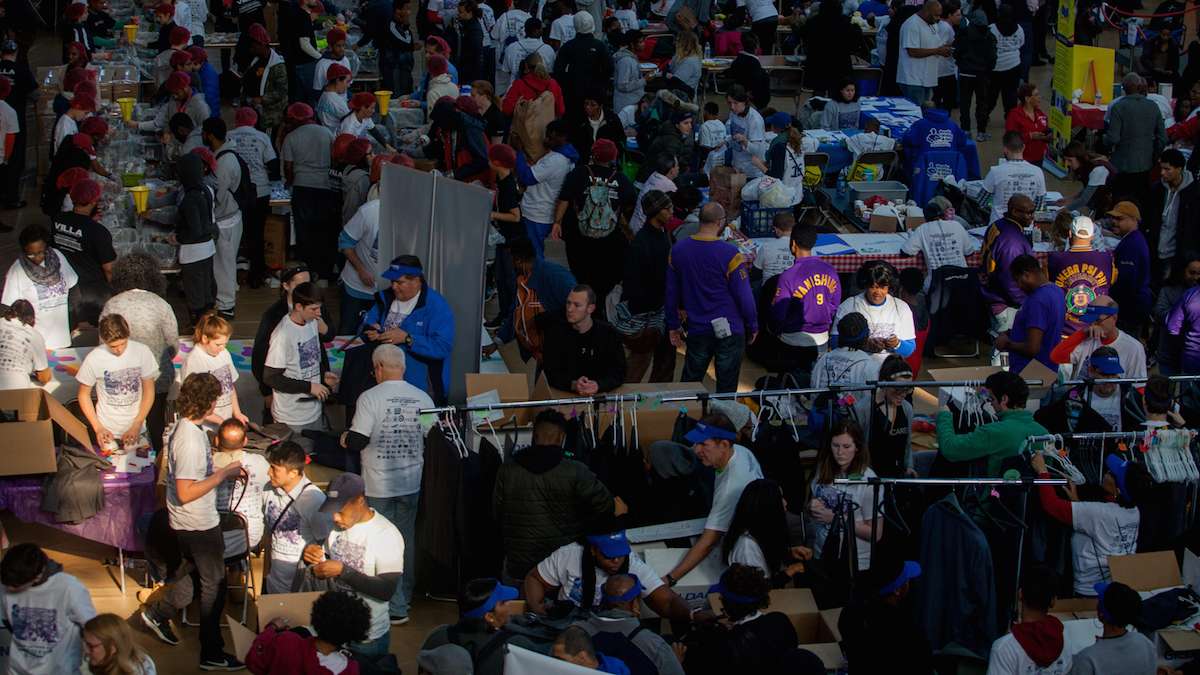
Volunteers worked on various projects on Martin Luther King Day at Girard College. (Brad Larrison for NewsWorks)
-

Philadelphians walk through a job and services fair at Girard College on Martin Luther King Day 2017. (Brad Larrison for WHYY)
-
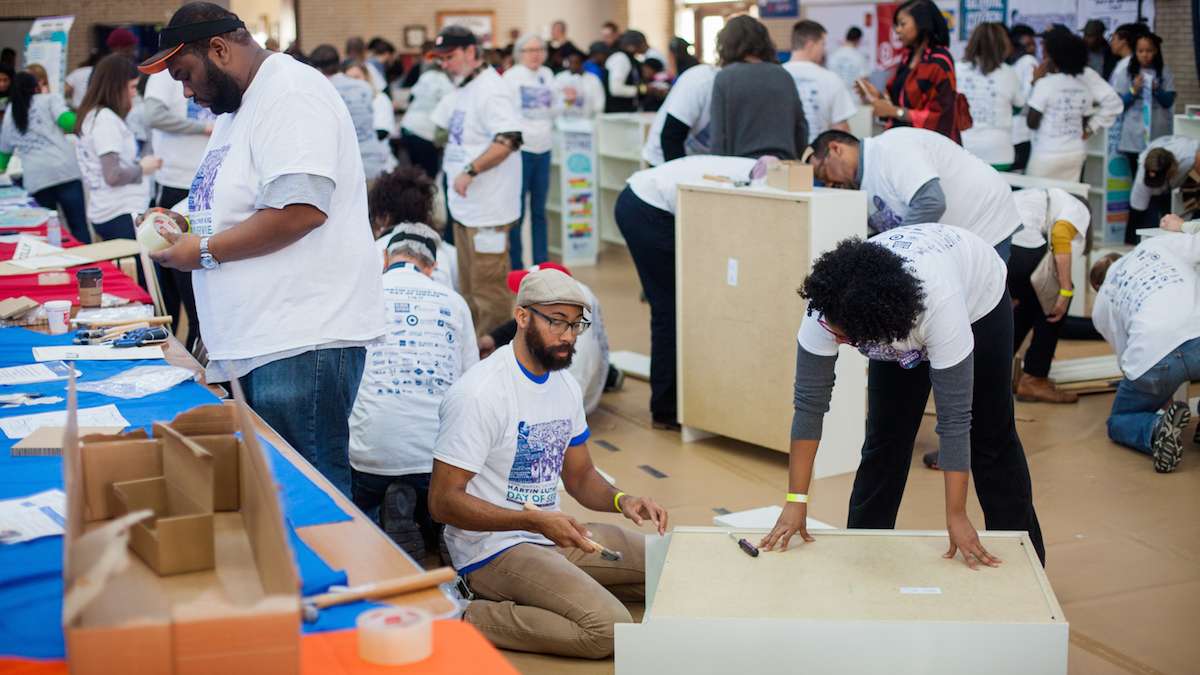
Volunteers with the organization Read By 4th -- a literacy program sponsored by the Free Library of Philadelphia -- build bookshelves. (Brad Larrison for NewsWorks)
-
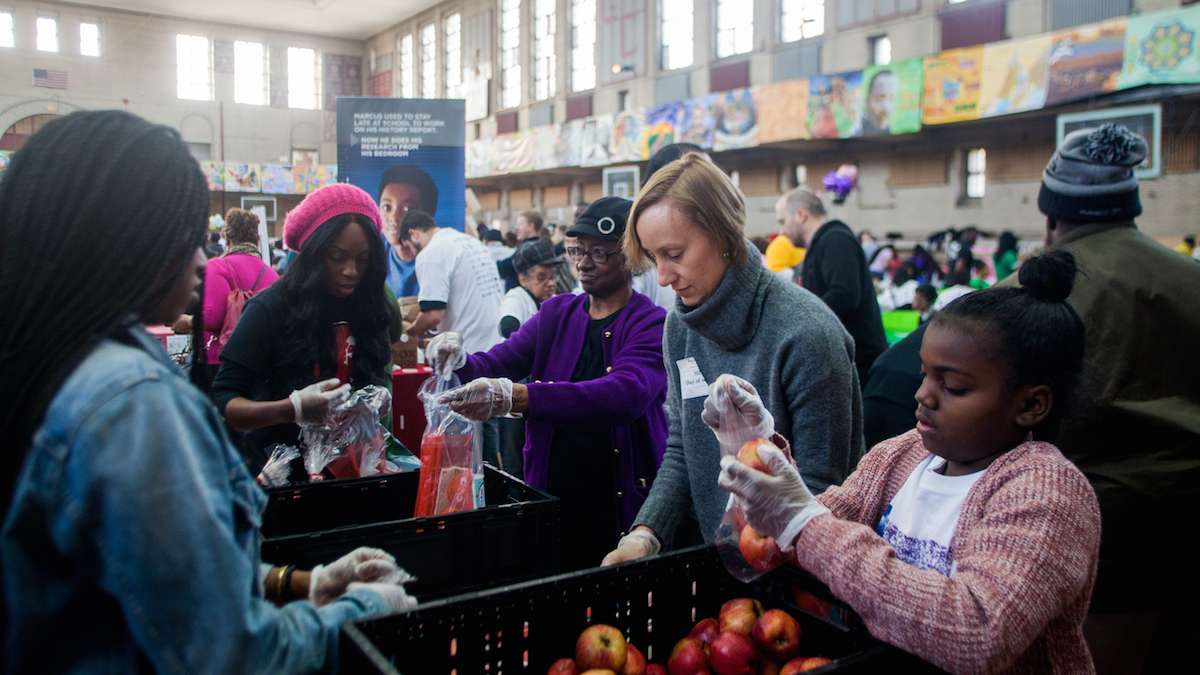
Volunteers with Philadbundance packaged apples at Girard College on Martin Luther King Day. (Brad Larrison for NewsWorks)
-
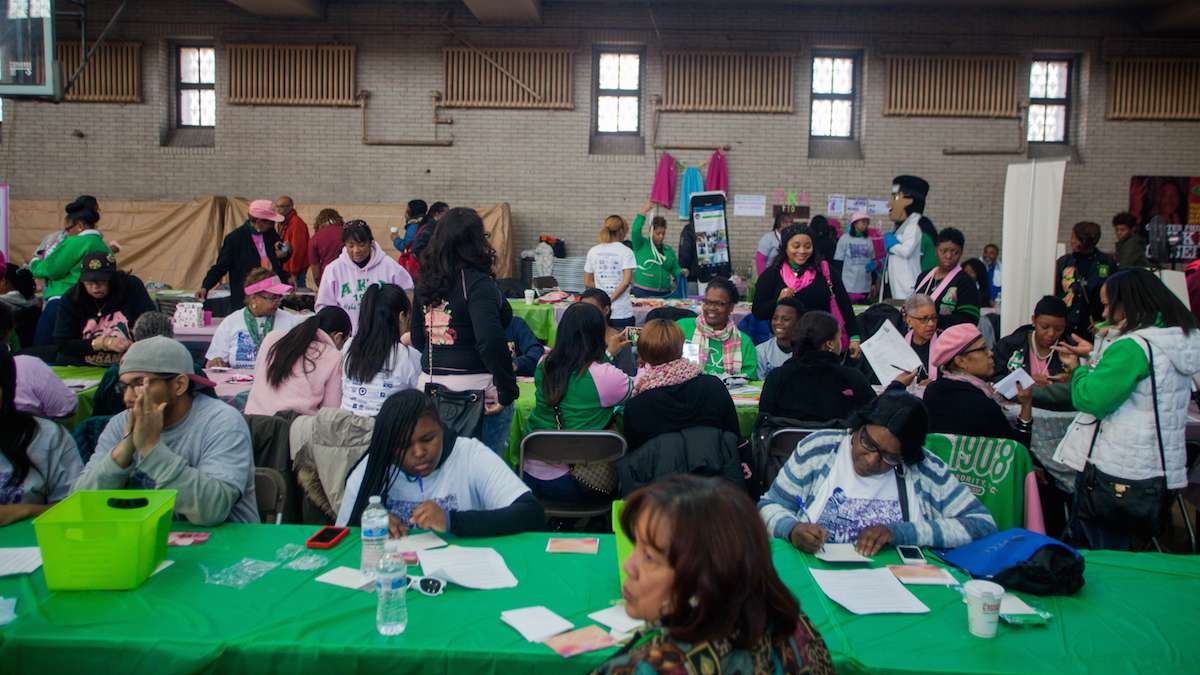
At a job and services fair at Girard College on Martin Luther King Day Philadelphians worked on applying for jobs and writing resumes. (Brad Larrison for NewsWorks)
-
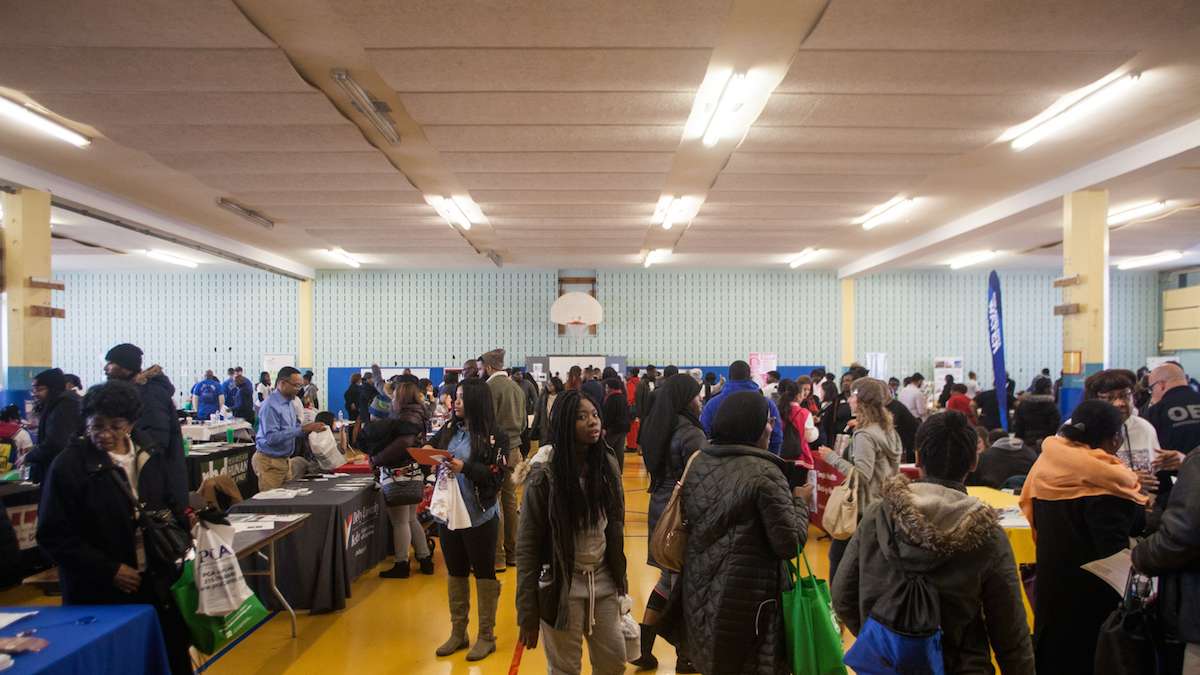
Philadelphians walk through a job and services fair at Girard College on Martin Luther King Day 2017. (Brad Larrison for NewsWorks)
-
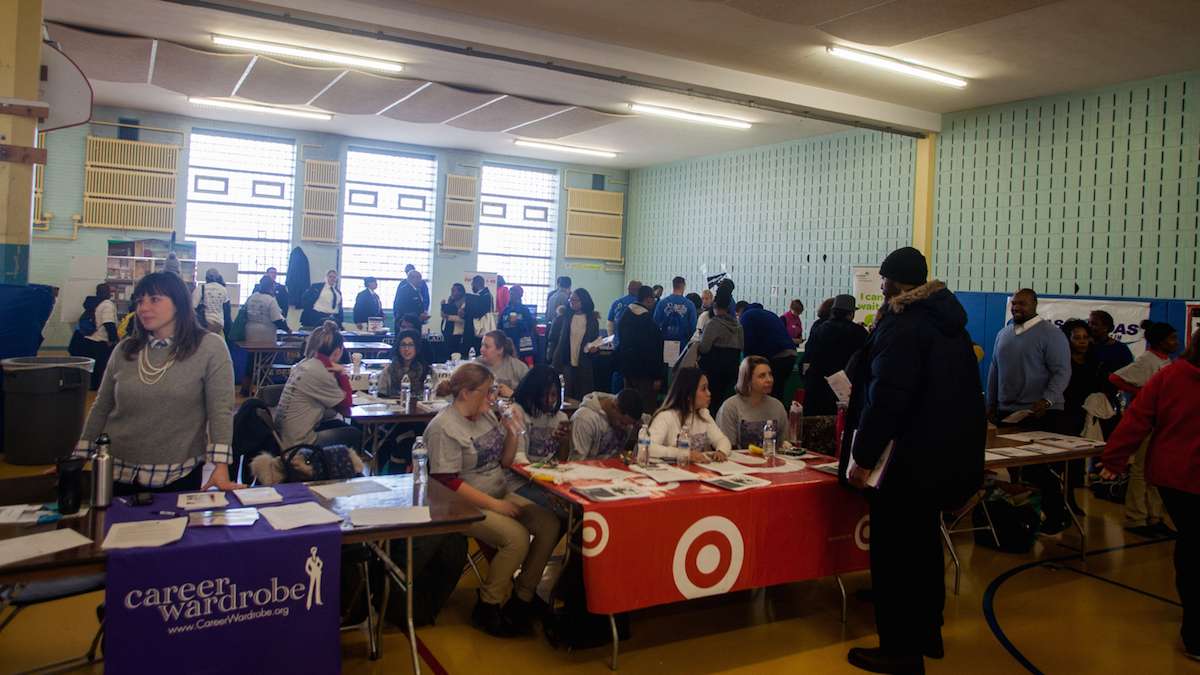
Philadelphians walk through a job and services fair at Girard College on Martin Luther King Day 2017. (Brad Larrison for NewsWorks)
-
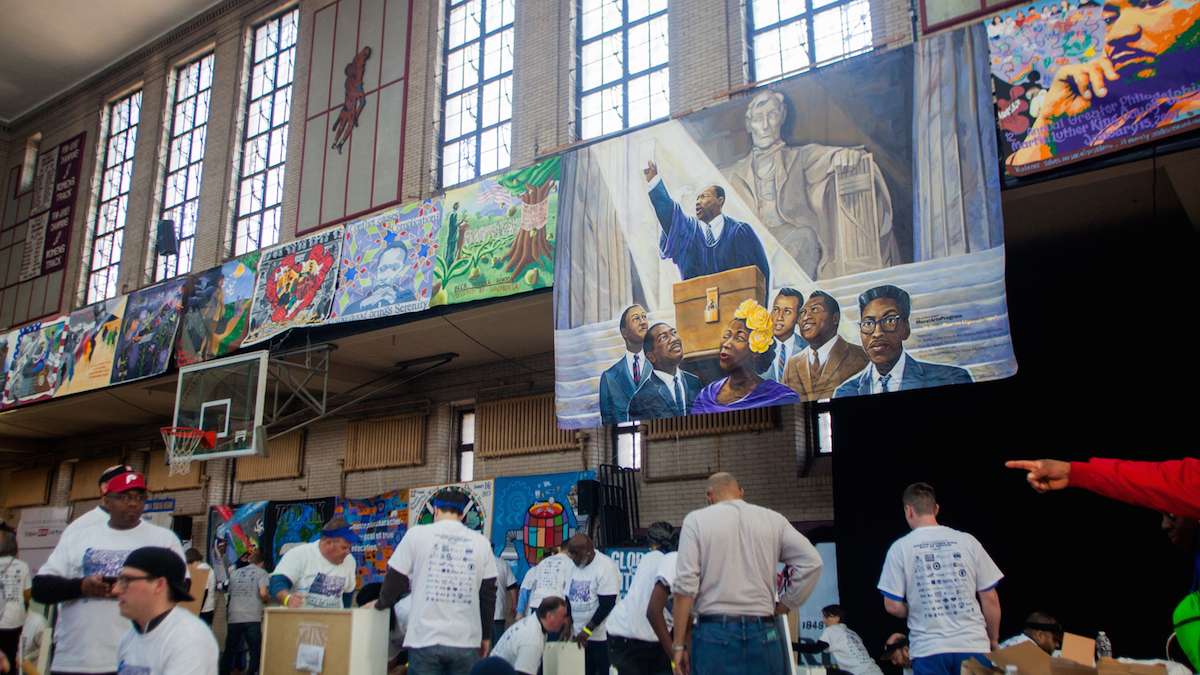
Underneath murals of Martin Luther King and other civil rights leaders volunteers worked on buidling bookshelves at Girard College on Martin Luther King Day. (Brad Larrison for NewsWorks)
-
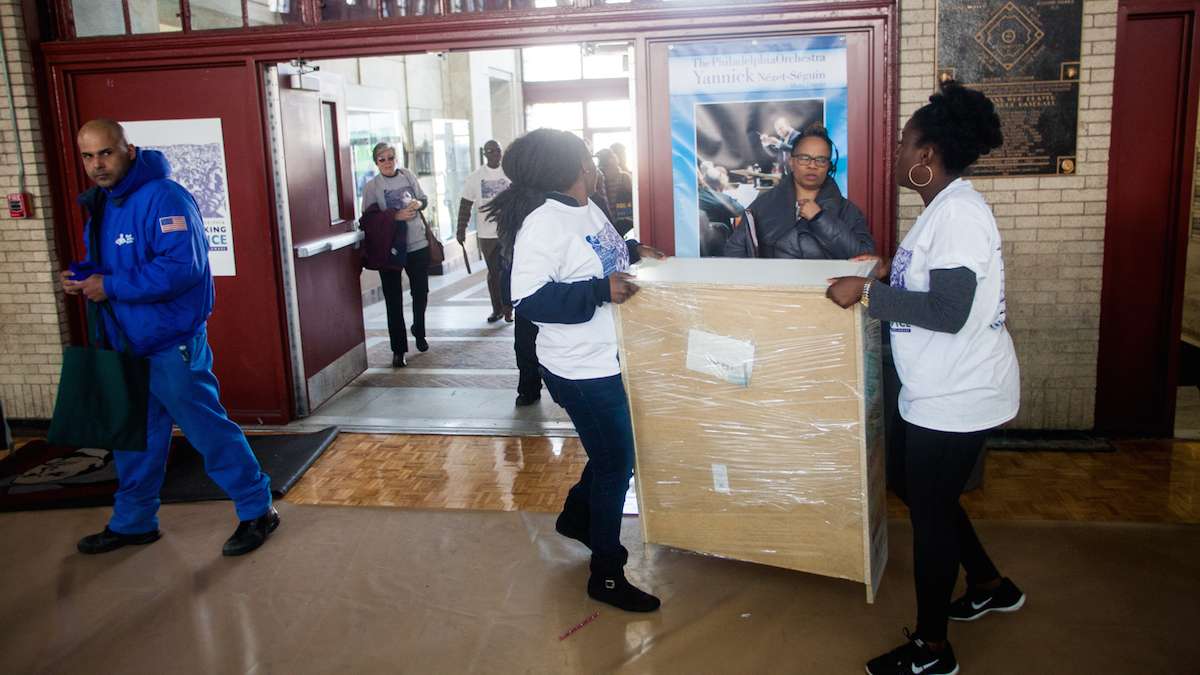
Volunteers with the literacy organization Read By 4th carried newly built bookshelves to be loaded on to trucks. (Brad Larrison for NewsWorks)
-
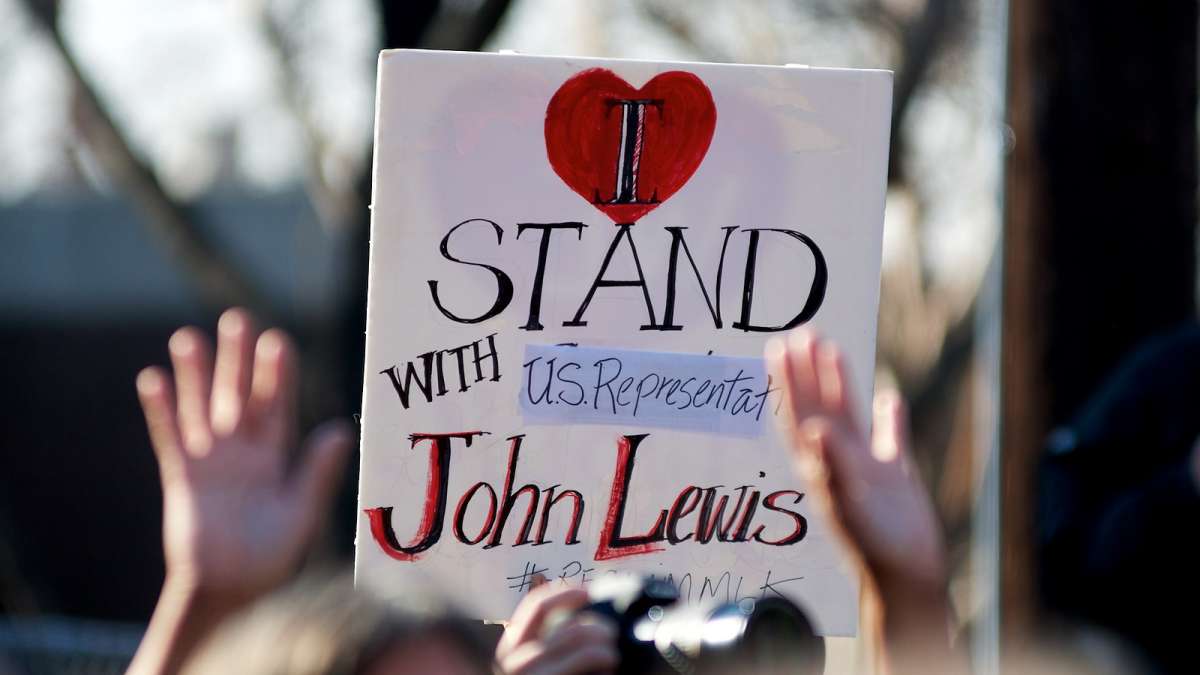
-
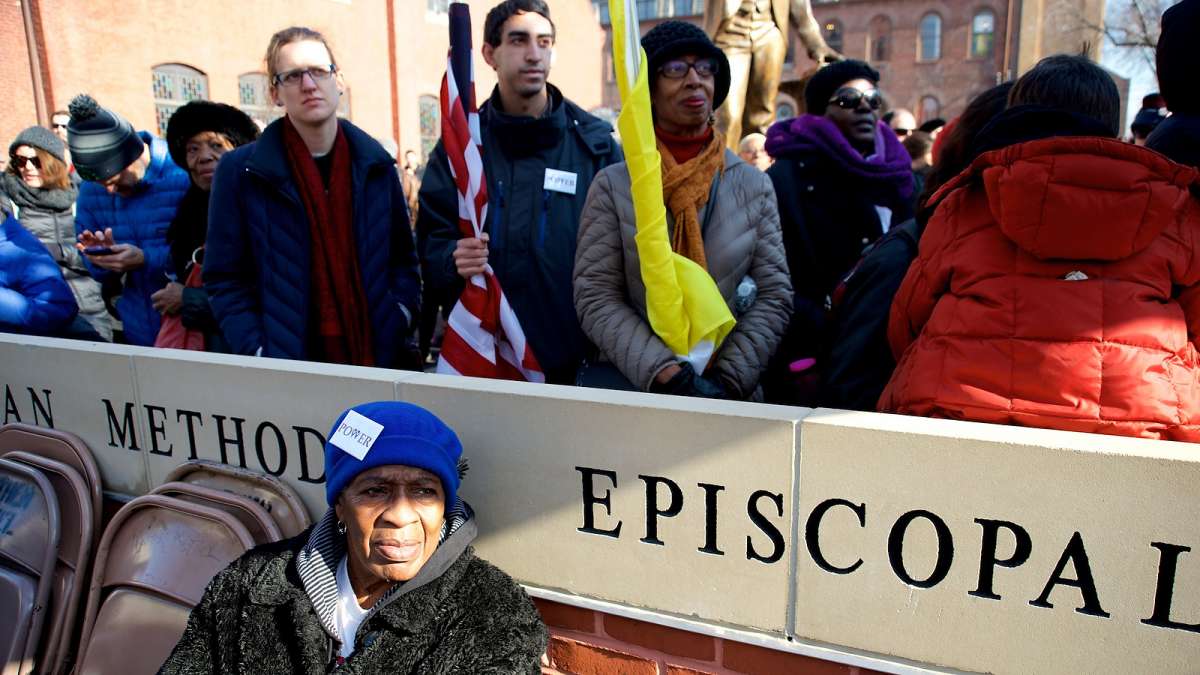
-

-

-
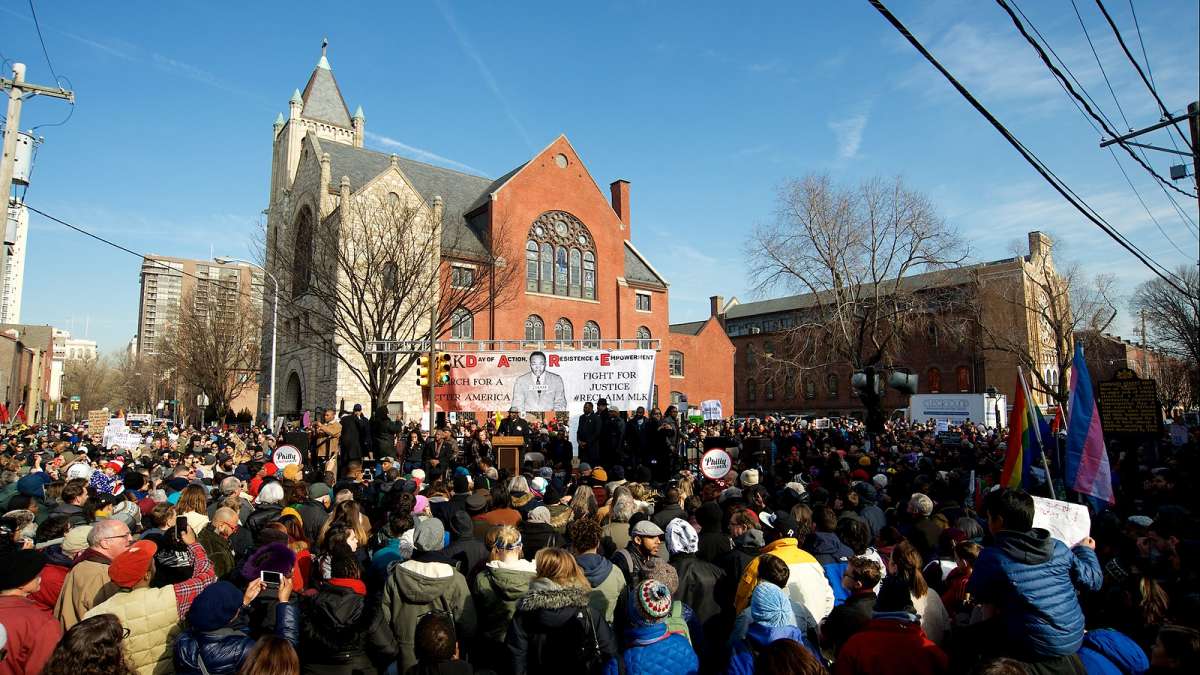
-

-

-

-
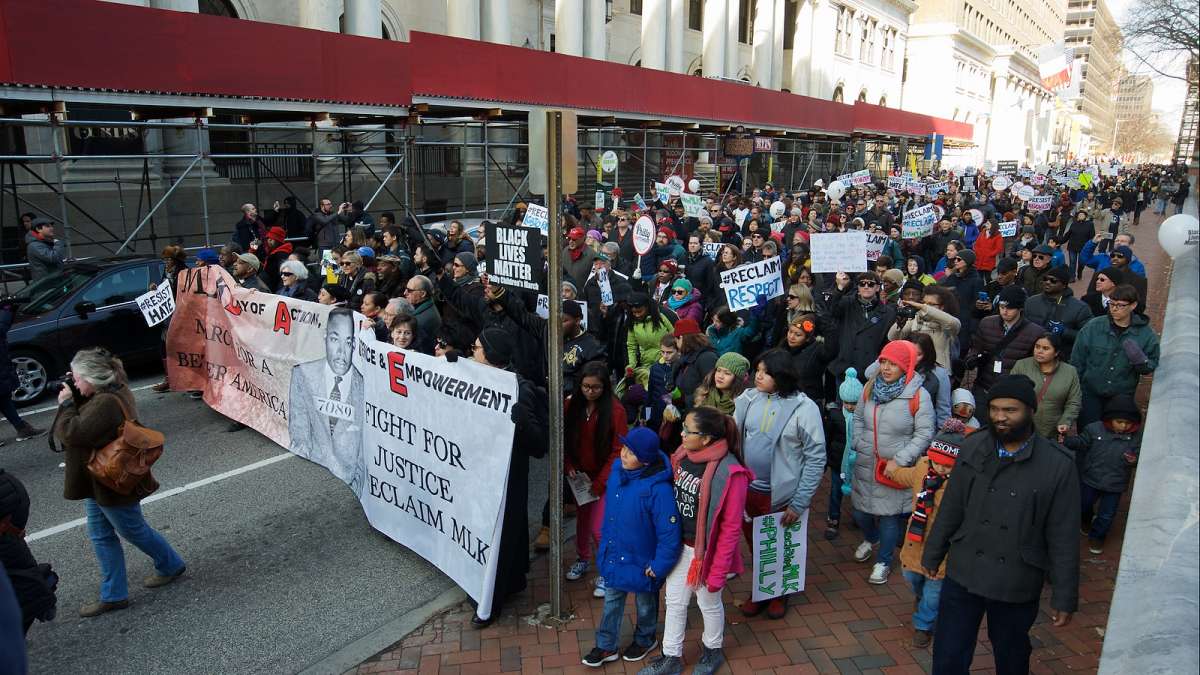
-
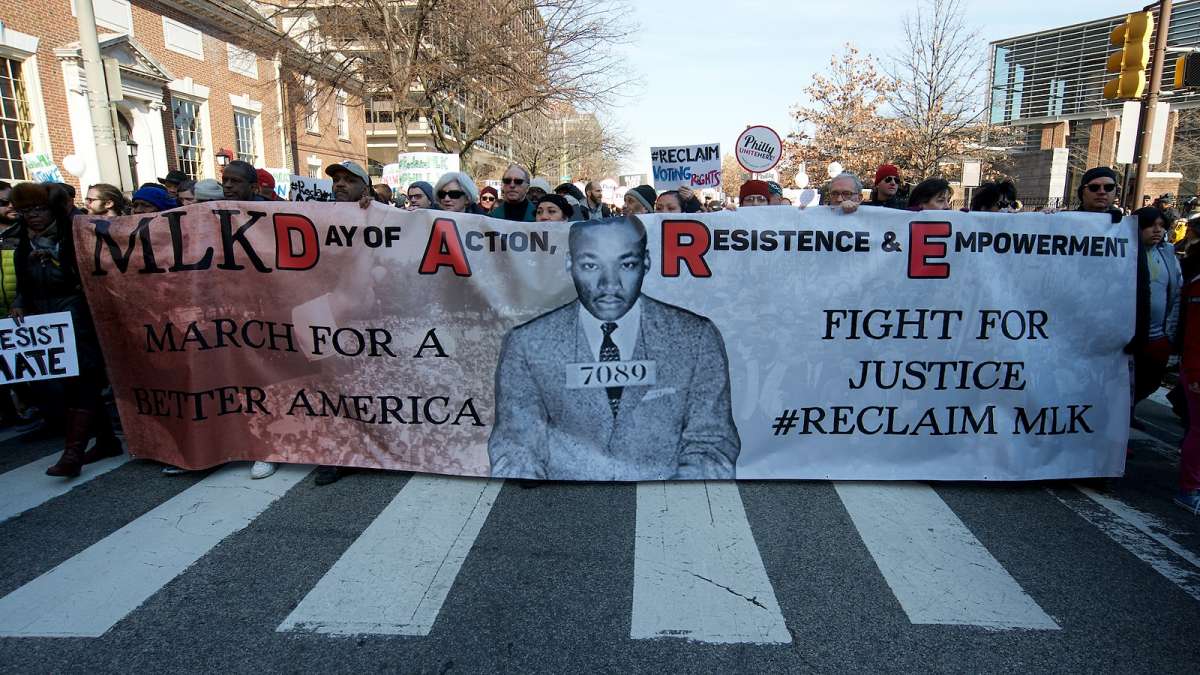
-

-

-
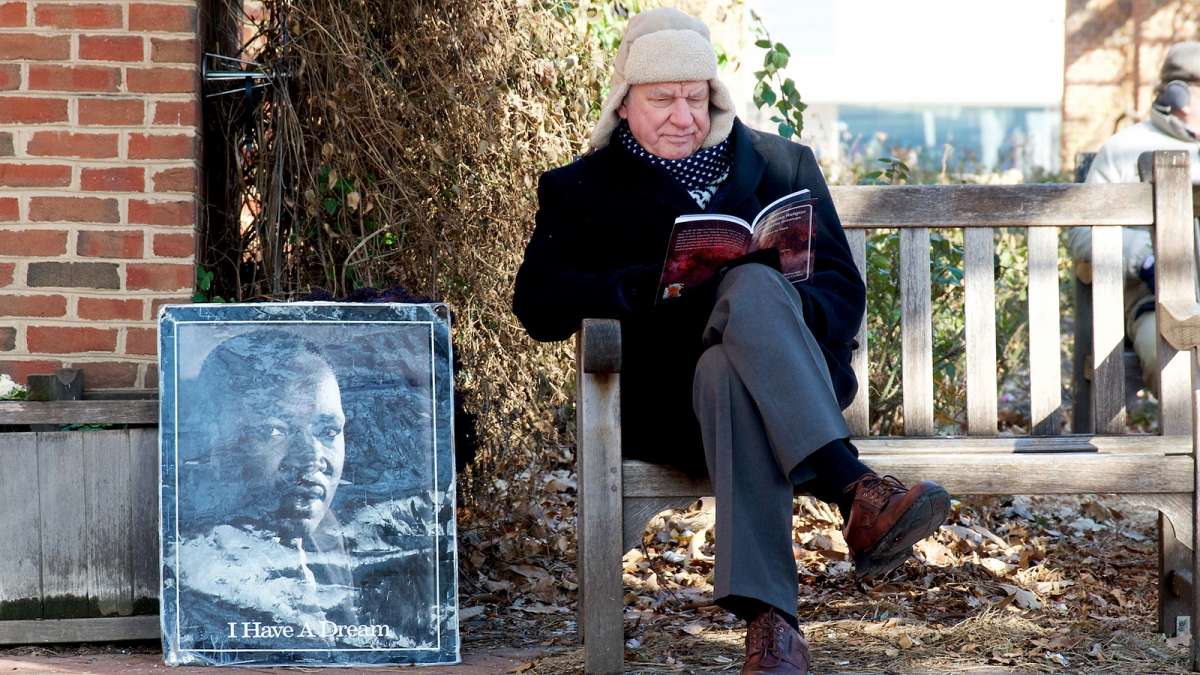
-

-

-

With Republicans set to control Washington, a coalition of left-leaning organizations marched near Independence Hall Monday to rally against President-elect Donald Trump and unify for the fight ahead.
About 30 groups took part in the Philly MLK Day D.A.R.E. March for a Better America and organizers estimated the crowd at 2,500. Visual estimates from reporters on scene suggested there were at least 1,000 marchers present.
D.A.R.E. stands for Day of Action, Resistance, and Empowerment. It featured speakers from the full spectrum of progressive causes. Protesters heard remarks from labor unionists, enivonmental activists, immigrant-rights advocates, clergy, and those with the Black Lives Matter movement. Participants signed on to a manifesto dubbed the 21st Century Declaration of Rights for a Better America, which included a smorgasbord of liberal talking points.
“We only win when we form multi-racial, multi-faith coalitions of people that are determined to hear one another, and love one another, and walk with one another to change the damn world,” said Bishop Dwayne Royster, who works with a network of progressive religious congregations known as PICO and used to head the Philadelphia-based interfaith group POWER.
The march started in the shadow of Independence Hall at 6th and Market and proceded to Mother Bethel Church at the corner of 6th and Lombard just a few blocks away. Organizers chose Mother Bethel because in 1817 it hosted a meeting among free African-Americans who successfuly blocked plans that would have returned former slaves to Africa. Though organizers did not point this out in their materials, that same stretch of Lombard Street was also that site of an 1842 race riot that damaged many black homes.
Monday’s march was also an attempt to reframe the national holiday that celebrates Martin Luther King Jr.’s birth. MLK Day is widely observed as a national day of service, but participants want it to also be thought of as a day of activism and organizing. Keon Libertado, a railroad worker and active union member, believes there’s room for both visions.
“Indeed we want to serve,” he said. “But I think that at the same time we can serve our country also by protecting our democracy and making sure that everybody in the country has their basic human needs [and] human rights met.”
Two years ago a similar event on MLK Day drew a bigger crowd, laying bare the question of whether a common enemy will be enough to unite the political left. Some speculated that the major protest in Washington planned for the day after the innauguration might have depressed enthusiasm.
Monday’s gathering was mostly calm, with the exception of a bizarre incident during the brief, marching portion of the event.
At one point Black Lives Matter activists Asa Khalif drew attention to a man who wanders Center City in biblical garb and is known colloquially as Philly Jesus. Khalif referred to the man as a homophobe, referencing past comments made on social media, and said he wasn’t welcome at the march.
The man responded by defiantly walking at the front of the march even as protesters attempted to block him. The interaction was largely peaceful with only a small bit of jostling, but Khalif threatened retaliation at a later date.
“Black Lives Matter, we’re gonna see you very soon,” Khalif said. “Get thee behind me Satan, but [expletive] we’re gonna get behind you.”
On this day of progressive unity, the varied reactions to Philly Jesus encapsulated problems that have long plagued the left. How militant is too militant? How passive is too passive? Those were the questions that dominated Dr. King’s day. And they remain questions today.
WHYY is your source for fact-based, in-depth journalism and information. As a nonprofit organization, we rely on financial support from readers like you. Please give today.





